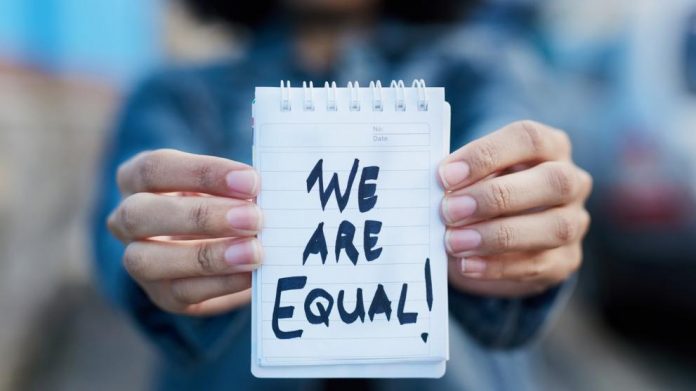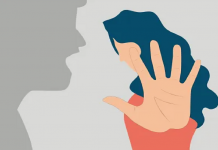This article is written by Sharad Yadav from the Institute of Law, Nirma University. This article will help you to understand the problems which women face at the workplace and the solution to reduce gender stereotypes.
Table of Contents
Introduction
The past few years have seen a decline in many gender-related barriers and biases, yet gender stereotypes continue to create problems in women’s careers. Many opportunities for women continue to be negatively affected by gender stereotypes. Gender stereotypes exist despite having the provision of equal opportunities in workplaces. Women’s self-confidence, competence and ability are heavily impacted due to gender stereotypes in the workplace. Discrimination against women includes those differences of treatment that exist because of stereotypical expectations, attitudes and behaviours towards women. This article will be covering the aspects related to sexual harassment at the workplace, judicial stereotypes, the meaning of gender discrimination and the solutions to eliminate gender discrimination at the workplace.
India’s position
In India, like many other countries in the world, the pay gap exists across the sectors. According to the 2018 Monster Salary Index, the average pay gap stands at 22.5 percent. This index also shows that this gap increases with an increase in tenure and higher education. This showed that women earn less compared to their male counterparts, even though having the same qualifications and skills. At the time of promotion, women often face disadvantages due to the deeply ingrained societal gender roles disadvantage by deeply ingrained societal gender roles.
Gender discrimination
Discrimination in the job refers to treating people differently because of the characteristics that are not related to their skills or requirement of the job. Discrimination can be of any type related to race, sex, political opinion, national caste,race and others. According to International Labour Organization (ILO) “Discrimination at workplace is a violation of human rights that waste human talents having a detrimental effect on the productivity and economic growth.”
Glass ceiling
The glass ceiling is yet another outcome of gender discrimination. The Americans coined the term “glass ceiling” to describe the phenomena of social and organizational prejudiced attitudes that create artificial barriers and keep women from holding top positions. This glass ceiling does not exist because of employer-biased attitudes or any male domination in the company but exists due to women’s final disposition, their family, children and also job demand.
Sexual harassment at the workplace
Sexual harassment affects negatively and has psychological as well as health effects. It is against individuals’ very fundamental human rights. In the landmark case of Vishaka and others vs. State of Rajasthan and “Others” (1997), the Apex Court not only defined sexual harassment but also laid down the guidelines or code of conduct for workplaces to prevent and punish the offenders. In the year 1999 again the Apex Court further enlarged the definition of sexual harassment in the case of Apparel Export Promotion Council vs A.K. Chopra (1999). Sexual harassment is defined as any act which is verbal or gestures sexual advance, sexually explicit and derogatory statement toward women worker by their male superior or anyone who is in the position to harass them. Also, The Sexual Harassment of Women at Workplace (Prevention, Prohibition and Redressal) Act 2013 was a significant step towards addressing harassment in the workspace.
Judicial stereotyping in India
Judicial Stereotyping is the practice of judges perpetuating harmful stereotyping by ascribing specific attributes to a social group which ultimately acts as a barrier to justice. The use of stereotypes by the Judges points toward a lack of accountability in the legal system. One of the famous cases underlying misogyny was the Mathura Case of 1979 which serves as a blatant failure of our Indian judiciary. In this particular case, two policemen were acquitted of charges of rape by relying on factors like absence of “marks of injury” and “habituation with sex”. After the coming out of the judgment, four law professors wrote to the Supreme Court questioning the concept of consent in the judgment. It is said to be the turning point in the women’s rights movement in India.
In 2015, stereotypes were removed from a prominent medical jurisprudence textbook with an emphasis on the need to sensitively deal with people of alternate sexual orientation, sex workers, and children in rape cases.
Transgender people
In the year September 2018, the Supreme Court (SC) scrapped Section 377, a colonial-era ban on gay sex. Many organizations still seem to be hiring transgender people just for the sake of it, to tick boxes, without fully understanding. Many organisations are still not comfortable having a transgender person as a leader or a manager. We need to educate people on this issue, only scrapping Section 377 would not be sufficient.
Anti-harassment policies
Similar to the requirements under the POSH Act The Sexual Harassment of Women at Workplace (Prevention, Prohibition & Redressal) Act, 2013, organisations must put in place requisite grievance redressal mechanisms for transgender individuals to deal with the harassment-related complaints while at the same time keeping the identity of the complainant anonymous.
Schemes for women empowerment
National Commission for Women (NCW)
In the year 1992, the Government of India set up the NCW statutory body with a specific mandate to study and monitor all matters pertaining to the legal safeguards provided for women, review the existing legislation to propose amendments wherever necessary, etc.
Reservation for women in local self-government
The 73rd Constitutional Amendment Act passed in 1992 by Parliament for ensuring one-third of the total seats for women in all elected offices in local bodies whether in rural or urban areas.
The National plan of action for the girl child (1991-2000)
The plan of action is to ensure the survival, protection and development of the girl child with the ultimate objective of creating a greater future for the girl child.
National Policy for the Empowerment of Women, 2001
The Department of Women & Child Development in the Ministry of Human Resource Development has prepared a “National Policy for the Empowerment of Women” in the year 2001. The main goal of this policy is to bring about the development and empowerment of women.
Double standard
It is often noticed that identical professional behaviour differentiate people depending on the gender of the person. The study conducted by the Harvard Bussiness Review, 2018 examining gender language in leadership examination found that women are frequently told that “they need to be more confident and assertive” while being told “they are too bossy” in the same evaluation.
A new world of work
According to a report around 51 percent of India’s workforce is self-employed compared to 33.5 percent who are casual labourers and around 15.6 per cent who are salaried workers. We can conclude that the vast majority of workers are not covered by the nation’s labour regulations. A large number of women work in the informal economy as compared to the formal sector. In a largely unregulated domestic work sector, there are around 2.3 million women domestic workers out of a total of 3.9 million domestic workers. We need to have found ways of both meeting the existing gaps in social security and protection and creating a safe and healthy environment for women workers.
Effect on women’s self-evaluation
Gender stereotypes affect how women evaluate themselves. Women’s self-description differs from men’s self-description and is less agentic than men’s. Women tend to go through the process of assessing their own “fit”, with colleagues of the same type of job, and the result came out negative. Lack of confidence can have an adverse effect on one’s own mind. Negative expectations can give rise to self-directed bias. It is shown in the study that women when working collaboratively with men are unwilling to take an equal amount of credit for a good outcome and are likely to see themselves as less competent than their male counterparts.
Male being supervised by women
In Indian business, there are only a few females who hold supervisory positions however, with the changing scenario, the prevalence of women in supervisory positions has become very common. The workplace is considered to be the domain of males only, and women are considered as homemakers. Previously there were not many women who worked in the offices. Now, not only are women working in the offices but are holding some of the top positions in the company. Women are also considered as capable as men in doing the work in the offices.
Changing the mindset
- We all need to change our mindsets. Everyone needs to recognize their social role and find ways of coming out of gender stereotypes. We can teach the men and boys that it is not a bad thing if they take the instruction from a woman.
Solutions to eliminate gender bias at workplace
Toxic work culture still continues, it makes it hard for some employees to achieve their desired career progress. We can reduce this bias by following the methods given below:
Educate workers
The first step of solving any type of issue is education. If your employee is not aware that there is an issue then how will they change it. Make sure your organization employees know what gender bias looks like and how to avoid it—showing some examples and conducting small workshops every month to educate people can be a step ahead. Evaluate and standardize pay
Companies should make efforts to evaluate the current pay structure and make sure that the head is aware of any discrepancies that might fall in line with this national average. Women should be encouraged and should be treated equally. By acknowledging it, you can take steps to make your compensation system more progressive and reflective of equal pay for equal work.
Stand up against it
People need to stand up against any kind of bias or even during discussions. Everyone needs to recognize while having lunch or in any other place. It’s how you increase awareness of what gender bias sounds and looks like. It can present an opportunity to teach someone else what is the preferred treatment in the workplace. It’s not going to be an easy task because standing against people often needs courage, but you are standing for the right thing. This will help you to eliminate gender bias in the workplace.
Offering flexible work hours
The COVID pandemic has taught us that work can be done from home. Big companies like Amazon, Facebook, Apple, Google are now offering hybrid work regimes. Remote work helps in minimizing gender bias and allows men and women to optimize their working hours from the location of their choice. It encompasses a range of flexibility that includes working remotely and adjusting the usual working offers to capitalize on people’s available and productive hours of the day. It will also help those women who have to care for their children at home. Family-friendly policies and flexibility allow employees to maintain autonomy and consistency, improving satisfaction and engagement for female employees.
Mentoring programs
It’s not enough to encourage women within the workplace, they also need extra guidance and knowledge to achieve their career ambitions. Many research suggests that mentoring programs make for a more diverse work hierarchy. It helps minorities and women a brighter spotlight and helps them climb the professional ladder with the help of network, skill, and organizational knowledge. Mentoring relationships and pairing women with senior leaders can help them to get promotions by learning from them. These mentors do not necessarily belong to the same gender. It might be beneficial for men to mentor women as men still hold most senior leadership positions in companies across the nations. Mentorship will help women to feel more connected and engaged with their place of employment.
Conclusion
Women’s participation at the workplace has increased over time, but we still have to go ahead. The stereotypes which exist at the workplace today exist even in many prominent organizations. Educating the people about the same is very important. Once in a month or two months, every organization should start conducting a stereotypes awareness workshop to inform the organization’s people.
References
- https://journals.sagepub.com/doi/full/10.1177/2277975220975513
- https://www.outlookindia.com/website/story/opinion-silent-structures-in-what-ways-do-stereotypes-and-biases-affect-women-in-the-workplace/356604
- https://www.sciencedirect.com/science/article/abs/pii/S0191308512000093
- https://nyuscholars.nyu.edu/en/publications/gender-stereotypes-and-workplace-bias
- https://www.jstor.org/stable/27768007
- https://www.emerald.com/insight/content/doi/10.1108/JMD-11-2013-0140/full/html
- https://chronus.com/blog/how-to-overcome-gender-bias-in-the-workplace
Students of Lawsikho courses regularly produce writing assignments and work on practical exercises as a part of their coursework and develop themselves in real-life practical skills.
LawSikho has created a telegram group for exchanging legal knowledge, referrals, and various opportunities. You can click on this link and join:
https://t.me/joinchat/J_0YrBa4IBSHdpuTfQO_sA
Follow us on Instagram and subscribe to our YouTube channel for more amazing legal content.
 Serato DJ Crack 2025Serato DJ PRO Crack
Serato DJ Crack 2025Serato DJ PRO Crack











 Allow notifications
Allow notifications



